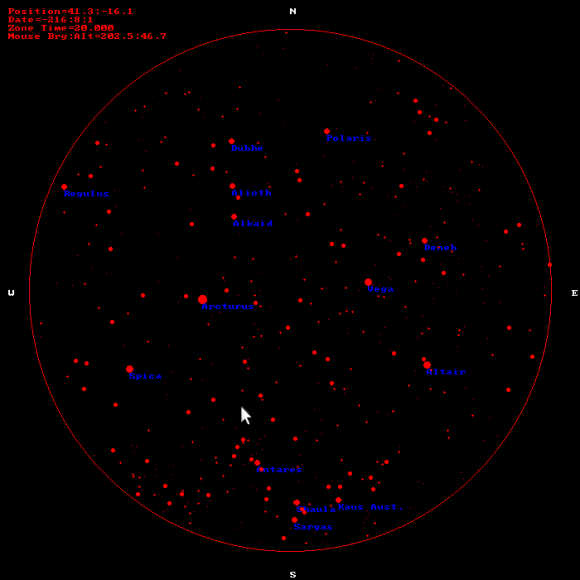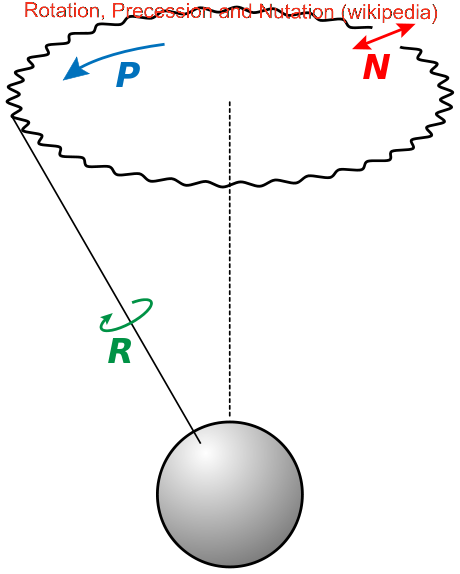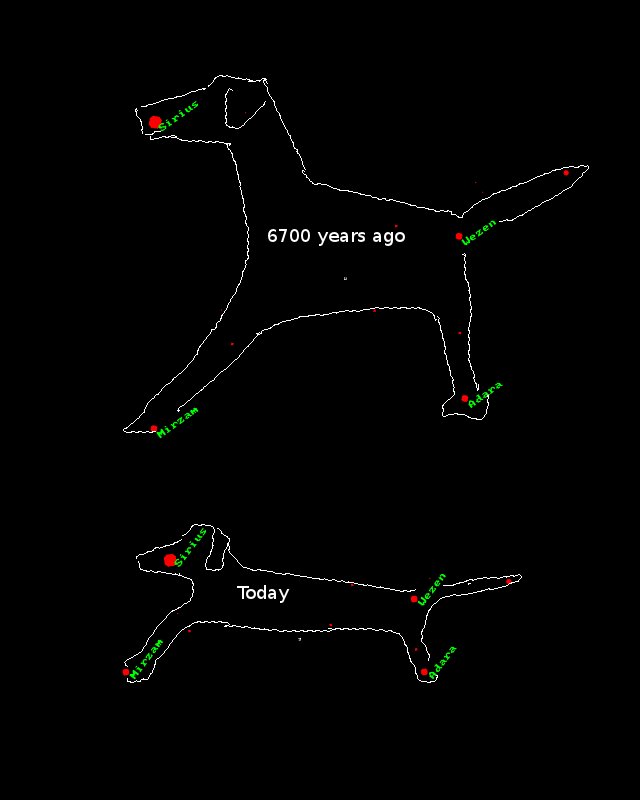Getafix v1.0 is written in c++ and uses data from the European Space Agency’s Hipparcos star catalog (free download from http://cdsarc.u-strasbg.fr/viz-bin/VizieR-3). Jean Meeus’ excellent book ‘Astronomical Formulae for Calculators’ outlined techniques that helped develop many of the algorithms used in Getafix. HOW IT WORKS To predict Stars we need to know the date, time and our own location on the surface of the Earth. Easy enough. Now we access a star database (there are about 117000 stars in the Hipparcos catalog) that contains the exact positions of stars at a known date and exact time. To prevent overcrowding, I have truncated the Hipparcos catalog, and only the 1000 brightest stars in the sky are used in the calculations. We then apply the following corrections to the raw data:- a. Precession – the change in apparent star positions due to the earth’s axis wobbling slowly (a bit like a spinning top when about to topple over). Yes, the earth’s axis wobbles, cycling slowly over about 26,000 years. Thats why the North Star we know of today isnt the same North Star that ancient civilisations would have seen in their skies. b. Nutation – the change in apparent star positions due to the earth’s axis nodding slowly (roughly one nod every 18.6 years or so). This is superimposed onto and at right angles to the effect of precession. Nutation is caused by the gravitational effects of the moon’s orbit. This picture shows the earth’s rotation (R, green arrow), precession (p, blue arrow) and nutation (N, red arrow). c. Proper Motion – Stars are not constant in their
relative positions. There is a very small, almost imperceptible relative
motion that stars exhibit with respect to each other. This is one of
the data parameters that was recorded with great accuracy by the
Hipparcos mission. Star Proper Motions are in the order of
milli-arcseconds/ year and it would take hundreds, perhaps thousands of
years before any discernable change in relative star positions could be
made out by the naked eye. To illustrate how small an arc-second is… our
Sun, when viewed from earth, subtends (the angle formed by an object at
a given external point) about 1800 arcseconds across its diameter.
Though miniscule in magnitude, it made sense to compensate for Proper
Motions of stars while writing getafix, after all accuracy is the key to
a good prediction. The effects of proper motion can be seen in the
images showing how Ursa Major (the big dipper) and Canis Major (The Dog) have changed over the last few thousands of years.  
|
  Next, the effect of the Earth’s rotation (360 degrees in 24 hours) needs to be applied to identify which stars are above the visible horizon. Remember, we have to compensate for revolution around the sun as well. These are combined into a concept called sidereal time. Then comes the graphics to plot the star positions. We used the Allegro graphics library (free download at http://alleg.sourceforge.net/download.html) to draw the image of the sky. The Allegro graphics library was originally written for the Atari gaming platform in the 80′s and is extremely easy to learn and use for simple yet effective graphics. It took just a few hours to write the graphics code for Getafix. Hats off to the designers of Allegro! On the left is a screenshot from Getafix of the night sky as it would have been seen by the greatest General of all time, Hannibal of Carthage during his Roman conquest, just before the Battle of Cannae. August 2nd, 216 BC. You can download the executable file below to run on any linux based system. Extract the .zip file into any directory and double click on the 'getafix' file. the second file (.csv) contains almanac data. If you would like the sourcecode to examine, please email me -> aswankorula@gmail.com.
|
